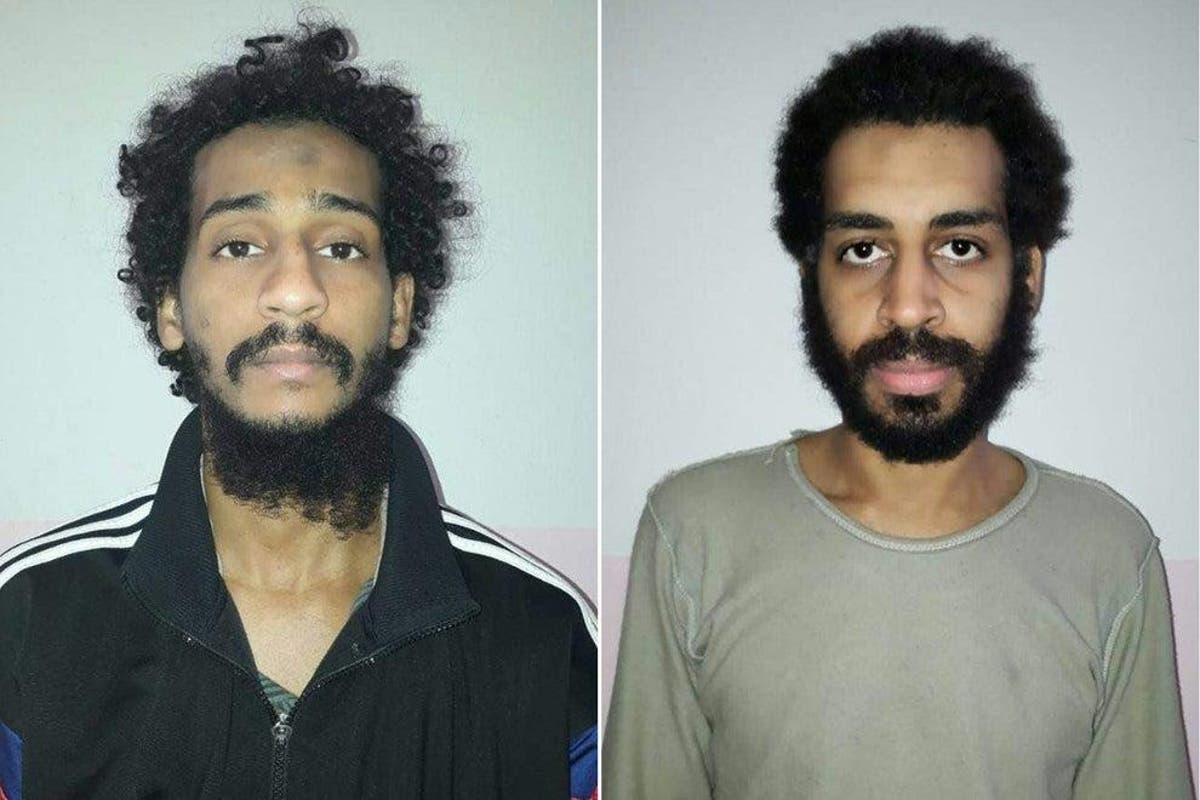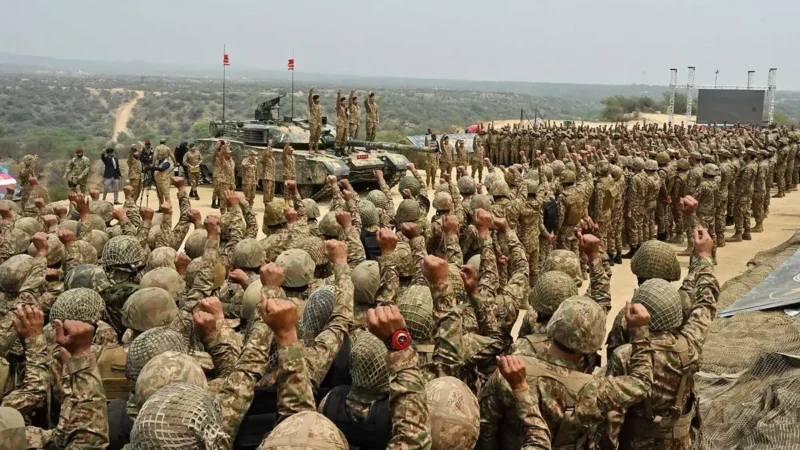Isis ‘Beatles’ were identified after boasting about arrest at EDL counter-demonstration

For free real time breaking news alerts sent straight to your inbox sign up to our breaking news emails Sign up to our free breaking news emails Please enter a valid email address Please enter a valid email address SIGN UP I would like to be emailed about offers, events and updates from The Independent. Read our privacy notice Thanks for signing up to the
Breaking News email {{ #verifyErrors }}{{ message }}{{ /verifyErrors }}{{ ^verifyErrors }}Something went wrong. Please try again later{{ /verifyErrors }}
Two members of the Isis “Beatles” terror cell were identified after they boasted about being arrested while opposing an English Defence League (EDL) march years before, police have revealed.
Alexanda Kotey and El Shafee Elsheikh were involved in the kidnapping of at least 27 people in Syria between 2012 and 2015, including aid workers and journalists who were later executed in Isis propaganda videos.
In 2011, the year before they travelled to join Isis, the pair were arrested as part of a group of Islamist extremists over a stabbing during clashes with the far-right EDL.
They were freed without charge but their comments on the incident years later in Syria helped British police trace their identities and gather evidence used in a US prosecution.
Kotey has been jailed for life after admitting eight charges, including conspiracy to commit hostage-taking resulting in death and conspiracy to murder US citizens, while Elsheikh was convicted after denying the crimes and will be sentenced on Friday.
The Metropolitan Police’s Counter Terrorism Command began an investigation into the then-unidentified militants in November 2012, following the abduction of British photographer John Cantlie and American journalist James Foley.
Commander Richard Smith told a press conference the militants involved kept their faces covered and withheld their names from hostages, leaving investigators scrambling for any “breadcrumbs” that might lead to their identification.
The first clue was the British accents that led the captors to be dubbed “The Beatles”, narrowing them down to the pool of foreign fighters who went to Syria from the UK.
“It was from the accounts of freed hostages and intelligence that we realised they were UK nationals, possibly from London,” Mr Smith said.
“One piece of information, which was fairly unremarkable on the face of it to the hostages, proved very significant to us, and this was the recollection of a conversation where one of the captors mentioned he had been arrested at an EDL march in London while taking part in a counter-demonstration.
“Based on that snippet of conversation, our investigation team was able to go back and identify a particular EDL march that took place in London on 11 September 2011.”
The demonstration, on the 10th anniversary of 9/11, had seen members of Muslims Against Crusades – an offshoot of Anjem Choudary’s al-Muhajiroun organisation that was banned as a terrorist group months later – burn an American flag and chant “USA terrorists” outside the US embassy.
They fought running battles with members of the EDL in the surrounding area after evading police attempts to keep the opposing groups apart.
El Shafee Elsheikh and Alexanda Kotey were captured in 2018 (Syrian Democratic Forces/AFP/Getty)
“A stabbing occurred linked to that march and a group of individuals had been arrested on suspicion of involvement,” Mr Smith said.
“From our records, we found that two of those individuals were Kotey and Elsheikh. Both of them were both released without charge for that offence but the information was invaluable in helping us zero in on them as being the men the hostages had described to us.”
Police officers had taken footage of the two men at the demonstration, and after their arrest, their fingerprints were taken and they were interviewed.
The evidence showed that they had been “associates for some time” before travelling to Syria, and they were also linked to Mohammed Emwazi, the Isis executioner who became known as Jihadi John.
His identity was proven after footage of police interviews over a spate of London bike thefts in 2012 was forensically compared to the voice of the masked militant in footage of the execution of Mr Foley and other victims.
A voice message that Elsheikh sent to his brother while in Syria was also matched to another police interview tape from 2009.
Barack Obama’s administration launched at least one operation to rescue American hostages held by Isis but was ultimately unsuccessful.
Some European hostages were released after their governments paid ransom, but both the US and UK governments have a long-standing policy of not paying money to terrorist groups.
Timeline of the Isis caliphate Show all 19 1 /19 Timeline of the Isis caliphate Timeline of the Isis caliphate ISIS began as a group by the merging of extremist organisations ISI and al-Nusra in 2013. Following clashes, Syrian rebels captured the ISIS headquarters in Aleppo in January 2014 (pictured) AFP/Getty Timeline of the Isis caliphate Abu Bakr Al-Baghdadi declared the creation of a caliphate in Mosul on 27 June 2014 Timeline of the Isis caliphate Isis conquered the Kurdish towns of Sinjar and Zumar in August 2014, forcing thousands of civilians to flee their homes. Pictured are a group of Yazidi Kurds who have fled Rex Timeline of the Isis caliphate On September 2 2014 Isis released a video depicting the beheading of US journalist Steven Sotloff. On September 13 they released another video showing the execution of British aid worker David Haines Timeline of the Isis caliphate The US launched its first airstrikes against Isis in Syria on 23 September 2014. Here Lt Gen William C Mayville Jnr speaks about the bombing campaign in the wake of the first strikes Getty Timeline of the Isis caliphate Isis militants sit atop a hill planted with their flag in the Syrian town of Kobani on 6 October 2014. They had been advancing on Kobani since mid-September and by now was in control of the city’s entrance and exit points AFP/Getty Timeline of the Isis caliphate Residents of the border village of Alizar keep guard day and night as they wait in fear of mortar fire from Isis who have occupied the nearby city of Kobani Getty Timeline of the Isis caliphate Smoke rises following a US airstrike on Kobani, 28 October 2014 AFP/Getty Timeline of the Isis caliphate YPG fighters raise a flag as they reclaim Kobani on 26 January 2015 VOA Timeline of the Isis caliphate Isis seized the ancient Syrian city of Palmyra on 20 May 2015. This image show the city from above days after its capture by Isis Getty Timeline of the Isis caliphate Kurdish forces are stationed on a hill above the town of Sinjar as smoke rises following US airstrikes on 12 November 2015 AFP/Getty Timeline of the Isis caliphate Kurdish forces enter Sinjar after seizing it from Isis control on 13 November 2015 AFP/Getty Timeline of the Isis caliphate Iraqi government forces make the victory sign as they retake the city of Fallujah from ISIS on 26 June 2016 Getty Timeline of the Isis caliphate Iraqi forces battle with Isis for the city of Mosul on 30 June 2017 AFP/Getty Timeline of the Isis caliphate Members of the Iraqi federal police raise flags in Mosul on 8 July 2017. On the following day, Iraqi prime minister Haider Al Abadi declares victory over Isis in Mosul Getty Timeline of the Isis caliphate Members of Syrian Democratic Forces celebrate in Al-Naim square after taking back the city of Raqqa from Isis. US-backed Syrian forces declare victory over Isis in Raqqa on 20 October 2017 after a four-month long campaign Getty Timeline of the Isis caliphate Female fighters of the Syrian Democratic Forces celebrate in Al-Naim Square after taking back the city of Raqqa from Isis. US-backed Syrian forces declare victory over Isis in Raqqa on 20 October 2017 after a four-month long campaign AFP/Getty Timeline of the Isis caliphate Trucks full of women and children arrive from the last Isis-held areas in Deir ez-Zor, Syria in January 2019 They were among the last civilians to be living in the ISIS caliphate, by this time reduced to just two small villages in Syria’s Deir ez-Zor Richard Hall/The Independent Timeline of the Isis caliphate Zikia Ibrahim, 28, with her two-year-old son and 8-month-old daughter, after fleeing the Isis caliphate, on Saturday 26 January 2019 Richard Hall/The Independent
Kotey and Elsheikh were captured by the Syrian Democratic Forces in January 2018, following the collapse of Isis’ “caliphate”, while Emwazi was killed in a targeted US drone strike in 2015.
They were prosecuted in the US following lengthy legal wranglings between the American and British governments after the UK said it could not prosecute them.
A legal challenge brought by Elsheikh’s mother over the UK’s decision to pass over its evidence without assurances that the death penalty would not be used revealed that the Crown Prosecution Service found there was “insufficient evidence” for a successful prosecution in 2016 and again in 2018.
The case concluded with the Supreme Court ruling the decision was lawful in 2020, but Mr Smith said police later obtained authorisation for 139 charges against Kotey and Elsheikh for offences including conspiracy to murder and hostage-taking.
He insisted that at the point the British government decided to hand its evidence to the US in June 2018, there had been no prospect of prosecution in the UK, and that the situation changed as the investigation progressed after the 2020 court case.
“At that point, a decision had not been made on where they would stand trial and there was a possibility that they would come back to the UK,” the senior counter-terror officer said.
Mr Smith denied letting Kotey and Elsheikh “slip through the net” at the point they travelled to join Isis in Syria, saying that in 2012 it was not possible to identify their intentions.
“There was not sufficient indication that anyone could realistically have acted on to intervene at an earlier stage,” he said.






